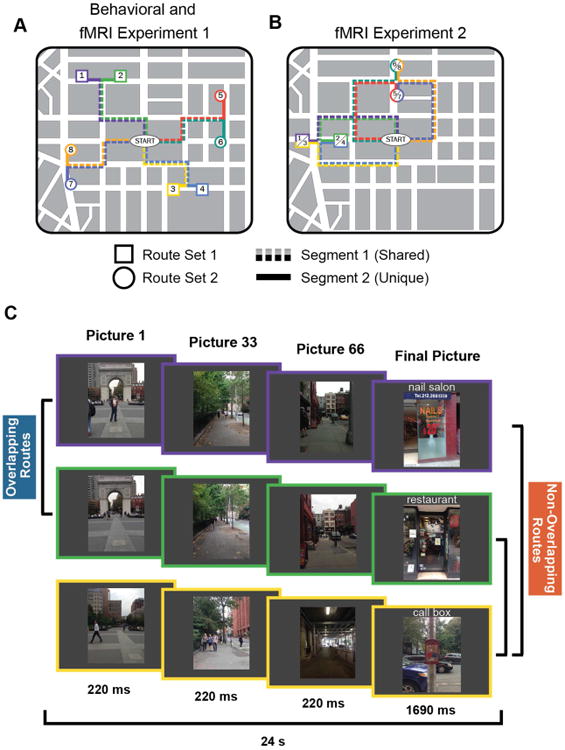Figure 1.

Route stimuli and experimental design.
(A) In the behavioral experiment and fMRI Experiment 1, stimuli consisted of 8 routes that traversed the New York University campus. Each subject learned 4 routes–either Set 1 (routes 1-4) or Set 2 (routes 5-8). Each set included pairs of routes that shared a common path (‘overlapping routes’; e.g. routes 1 and 2) and pairs of routes with no common paths (‘non-overlapping routes’; e.g. routes 1 and 3). Individual routes contained two segments: Segment 1 refers to the portion of each route that shared a path with another route; Segment 2 refers to the unique portion of each route (after the overlapping routes diverged). (B) In fMRI Experiment 2 the stimuli again consisted of 8 routes with each subject learning 4 of the 8 routes, with the 4 routes per set containing overlapping and non-overlapping pairs. However, some of the non-overlapping route pairs in Experiment 2 terminated at the same destination (e.g. routes 1 and 3) whereas others terminated at distinct destinations (e.g., routes 1 and 4). (C) In each Experiment, each trial consisted of a series of rapidly presented pictures that lasted a total of 24s.
See also Movies S1-S8.
